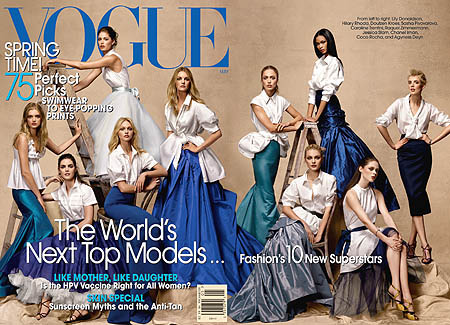
Inequality among women is deeply rooted by very rooted ideals of beauty. Skin color is an integral aspect of beauty around the world, and is a big source of tension between people of different ethnicities and among people of the same background or race. As fairness is often associated with beauty and success, skin color continues to be a major source of oppression; both men and women participate as oppressors in this case. As feminism does not have the ability to reach its potential unless all women work together, the discord caused by the stigma of darker skin is a true hindrance and a Master’s Tool, which Lorde discusses. “Interdependency between women is the way to a freedom...advocating the mere tolerance of difference between women is the grossest reformism, “she says (111). Lorde identifies our differences as our strengths; embracing feminists of different backgrounds and in turn all skin tones will only help the feminist cause. (112). Once women are able to comprehend this, they will find their efforts to “dismantle the master’s house” to be more effective. All this is very relevant to our CAP, which pinpoints skin color as one of the main facets that mould the Western ideal of beauty. In turn, The Bluest Eye, Toni Morrison’s Nobel Prize- winning novel, addresses racism and its effect on women who practice it and are subject to it. Morrison’s book is successful in pinpointing how skin color has continued to cause oppression and discord in society through time, and how women as a whole are weakened in the process.
As expected, the media has always played a major role in peoples’ perception of beauty, and Morrison recognizes this in The Bluest Eye. Pauline, Pecola’s mother, who is enchanted by movies, “learned all there was to love and all there was to hate” from them, specifically what was beautiful and what wasn’t (122). “She was never able, after her education in the movies, to look at a face and not assign it to some category in the scale of absolute beauty, and the scale was one that she absorbed in full from the silver screen” (122). Based on her assessment, she considered Jean Harlow, a white actress, to be particularly beautiful. Pauline strived to look like her, but probably was conscious of the fact that it would never be entirely possible because of the color of her skin. However, the book does not explicitly state that she was eventually discouraged by her skin. Pauline claims that “I ‘member one time I went to see Clark Gable and Jean Harlow. I fixed up my hair like I’d seen hers in a magazine…It looked just like her. Well, almost just like. Anyway, I sat in the show with my hair done up that way and had a good time…I took a big bite of candy, and it pulled a tooth right of my head. Here I was trying to look like Jean Harlow, and a front tooth gone. Everything went then. Look like I just didn’t care no more after that” (123). It was the broken tooth that ultimately made her give up in her efforts to look more like Jean Harlow, but it was only because it was one more thing that made her look less like Harlow. Because the difference in skin color created such a rift in her efforts, Pauline was completely discouraged when her once healthy set of teeth became were tarnished, which is a relatively minor obstacle in comparison.
There has always been inequality between people of the same race who vary in skin tone. Even today, this can be readily observed in the media and society. In “Teen Mags: How to get a Guy, Drop 20 Pounds, and Lose Your Self-Esteem,” Higginbotham suggests that inequality within a race is very noticeable when the “there is that one light-skinned black girl in every fashion layout. But she’s just as thin as the white girl standing next to her, and that white girl is always there- like a chaperone” (88). Basically, the lighter-skinned black model was chosen over darker models because her tone made her “whiter,” and that made her more respectable. A similar situation is described in The Bluest Eye when a wealthy, light-skinned black girl named Maureen arrives at Claudia and Frieda’s school. “The disrupter of seasons was a new girl in school named Maureen Peal…she enchanted the entire school. When teachers called on her, they smiled encouragingly. Black boys didn’t trip her in the halls, white boys didn’t stone her, white girls didn’t suck their teeth when she was assigned to be their work partners; black girls stepped aside when she wanted to use the sing in the girls’ toilet,” narrates Claudia (62). Maureen’s lighter skin was the reason why she commanded more respect from her teachers and piers. Her skin tone automatically made her less flawed, and that caused Claudia and Frieda to pick out some of her other defects. “Frieda and I were bemused, irritated, and fascinated by her. We looked hard for flaws to restore our equilibrium…we discovered that she had a dog tooth… and when we found out that she had been born with six fingers on each hand and that there was a little bump where each extra one had been removed, we smiled” (63). The fact that being lighter skinned is grossly advantageous emphasizes one of society’s major flaws that not only hold the feminist movement back, but all other types of advancement.
- Lavanya

No comments:
Post a Comment